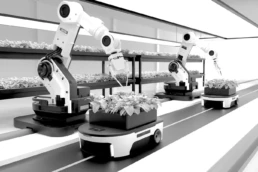The steel industry has been a vital pillar of the global economy for over a century. Steel is the backbone of modern infrastructure, providing the essential building blocks for roads, bridges, buildings, and much more. However, the industry has faced significant challenges in recent years, including increased competition from other materials and the rising demand for sustainable solutions. Despite these challenges, the future of the steel industry looks promising, with exciting developments and innovations on the horizon.
One of the most significant developments in the steel industry is the increased use of advanced technologies. Automation and robotics are becoming more prevalent in steel production, leading to more efficient processes and higher productivity. The use of digitalization and big data analytics is also revolutionizing the steel industry, enabling more accurate forecasting, better quality control, and enhanced customer service.
Another area of innovation in the steel industry is the development of new materials. New steel alloys with improved properties, such as increased strength, corrosion resistance, and ductility, are being developed. These advanced materials are ideal for high-performance applications, such as in the aerospace and automotive industries.
The focus on sustainability is also driving positive change in the steel industry. There is an increasing demand for sustainable steel products that reduce carbon emissions and conserve natural resources. Many steel companies are adopting more sustainable practices, such as using recycled steel and implementing energy-efficient technologies.
The steel industry is also playing a vital role in the transition to a low-carbon economy. Steel is a critical material for renewable energy infrastructure, such as wind turbines and solar panels. As the demand for renewable energy continues to grow, the steel industry is well-positioned to benefit from this trend.
Moreover, the steel industry is embracing innovation and collaboration to address environmental challenges. The SteelZero initiative, for example, aims to create a net-zero steel industry by 2050, bringing together leading steel companies committed to reducing their carbon footprint.
In conclusion, the future of the steel industry looks positive, with significant developments and innovations driving growth and sustainability. The industry is poised to benefit from advanced technologies, new materials, and sustainable practices, and is playing a vital role in the transition to a low-carbon economy. With collaboration and innovation, the steel industry will continue to be a vital part of the global economy for decades to come.


